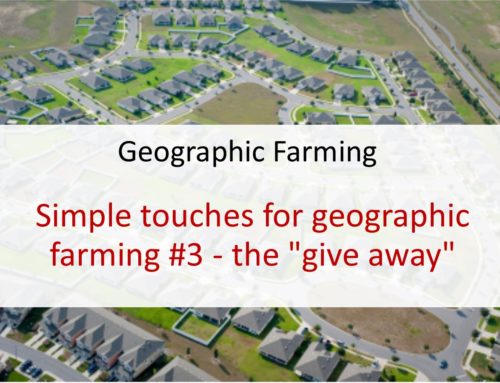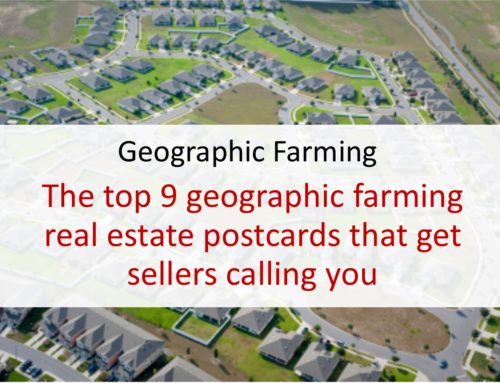Selecting the best geographic farm — Step 6. This is the sixth and final step in selecting a geographic farm. Farming is a long term investment in your brand, so it’s important you make a long term decision based on long term where you anticipate the sales coming from. Identifying the historical trends will point you in the right direction. Watch video to learn more.
RELATED POSTS
How to select the best geographic farm for real estate seller leads Part 6 – historical trends
So that sixth item you want to consider when you are looking to select a geographic farming location is the trend. Now you’ve gone through all of this analysis using the real estate marketing tools that I shared in the previous blogs. You’ve got two farms that look good and you are trying to decide which one to use for geographic farming. In fact, you may find a first geographic farm that looks good and a second geographic farm that looks good, but not as good. Everything seems to point to the first geographic farm but you want to do your last bit of due diligence and figure out which one is really best.
To find out which one is optimal to use for geographic farming as a part of your real estate marketing products, what you want to do is look at the turnover rate of each potential geographic farm location over the last couple of years. You want to look back in time to see the trend. Let’s say that the first trend is a turnover rate that is coming down. Motivated seller leads are decreasing and so are overall sales. The turnover rate was at 12%, 11%, then 10%, then 9% and now, in the last 12 months, 6%. It’s coming down. You also find that maybe the average sales price for real estate in this location is coming down as well.
Analyzing trends to determine the best geographic farming location when marketing for real estate agents
What does that tell you? It tells you that while this potential geographic farming location looks good right now, the real estate market in that area seems to be tanking.
Then you look at the other potential geographic farming location to find its trend. Maybe it had a low turnover rate and that turnover rate is continuing to increase. This means more real estate leads and more motivated sellers. Maybe this geographic farm is a newer community. Maybe the community was only built eight years ago. The turnover rate five years ago wasn’t all that good, but four years ago it got better, then three years ago even better. You see the sales price increase. You see that the real estate is beginning to ramp up in this area. This is one of the strongest real estate marketing tips you want to consider when picking a location for geographic farming.
So now you’ll see that one geographic farm has a downward slope trend, while the other geographic farm has an upward slope trend. If you are going to make a two or three of five or ten year long-term investment in geographic farming as a part of your real estate marketing strategies for your realtor business, then you may want to go for the trend rather the other details.
Use these real estate marketing tips to maximize seller leads and real estate lead generation when geographic farming
I know this a lot to bite in to and you might think it’s a lot of work to do to do when you’re getting started with geographic farming. That’s okay. Just do the first two if you want to and you’ll be off to a pretty good start with your real estate agent marketing tools. But if you are saying, “I’m going to invest $10,000 or $20,000 a year into a farm and I’m going to do this for a five year period.” You are looking at a $50,000 – $100,000 investment. Doesn’t it make sense to dig deep a little bit and make sure you are maximizing your profit on the investment in your real estate marketing products? When you do it right, by considering these different real estate marketing tips, you’ll be flying high and getting real estate leads.
Have Questions or Comments? Please ask your questions in the comments section below. We attempt to respond to ALL questions or comments.
V013








Leave A Comment